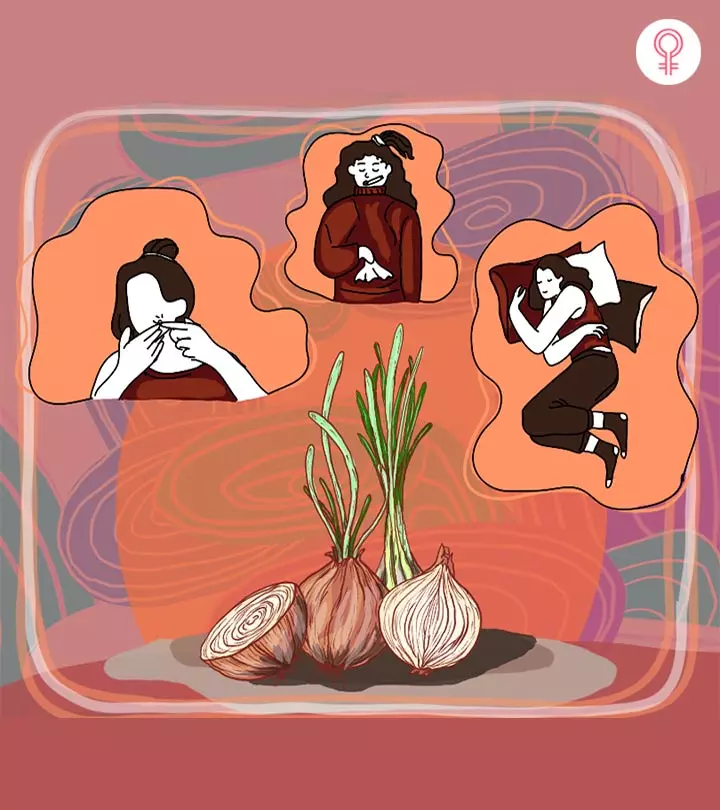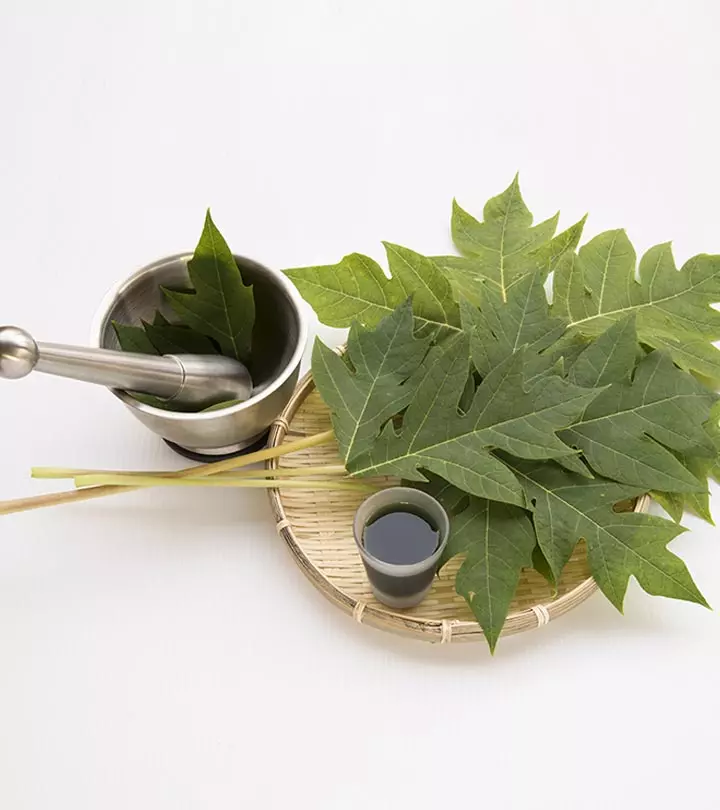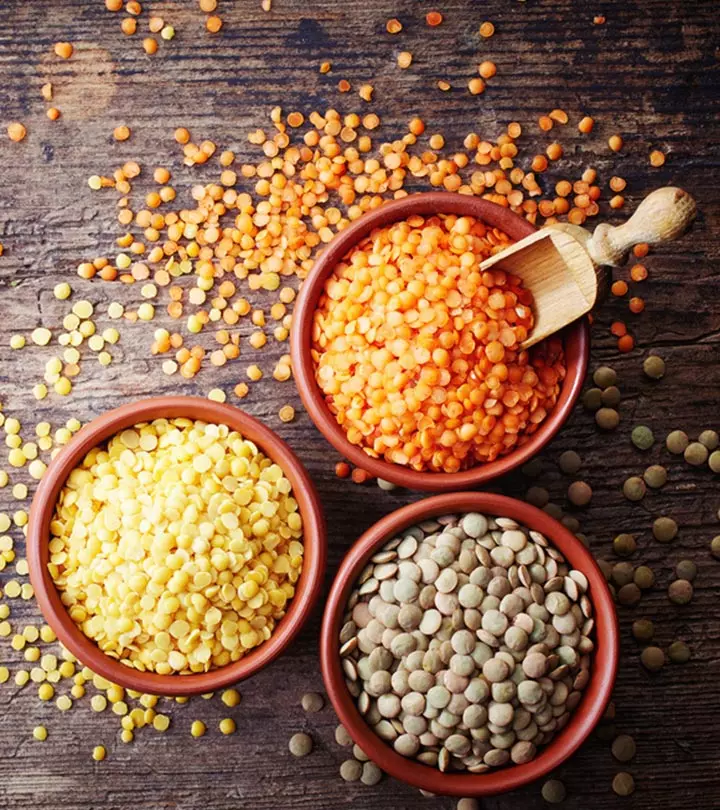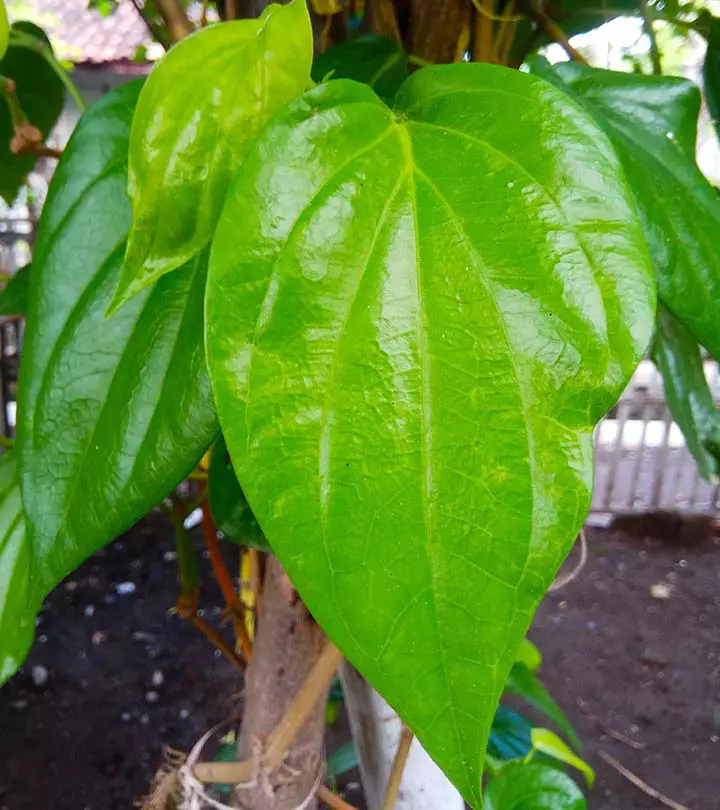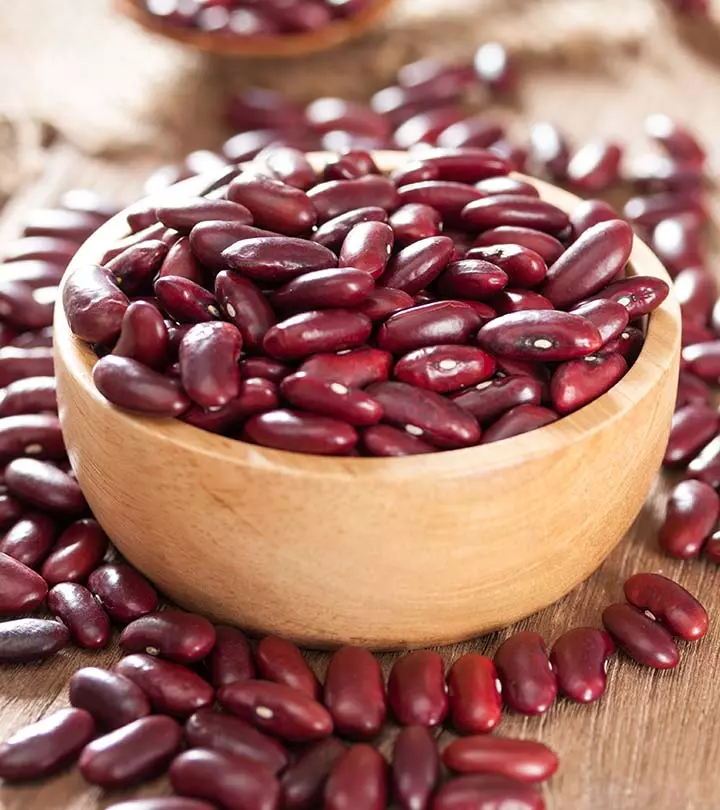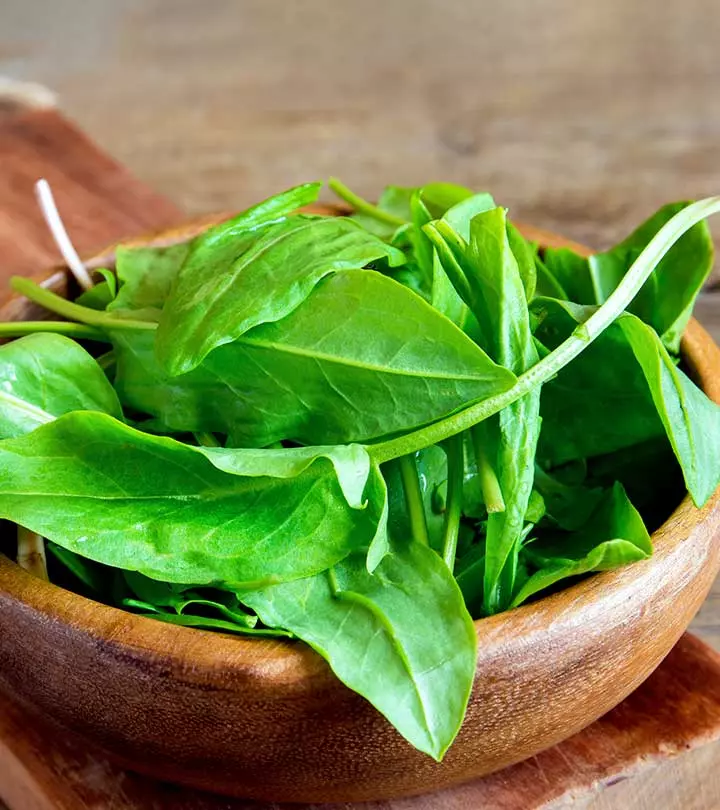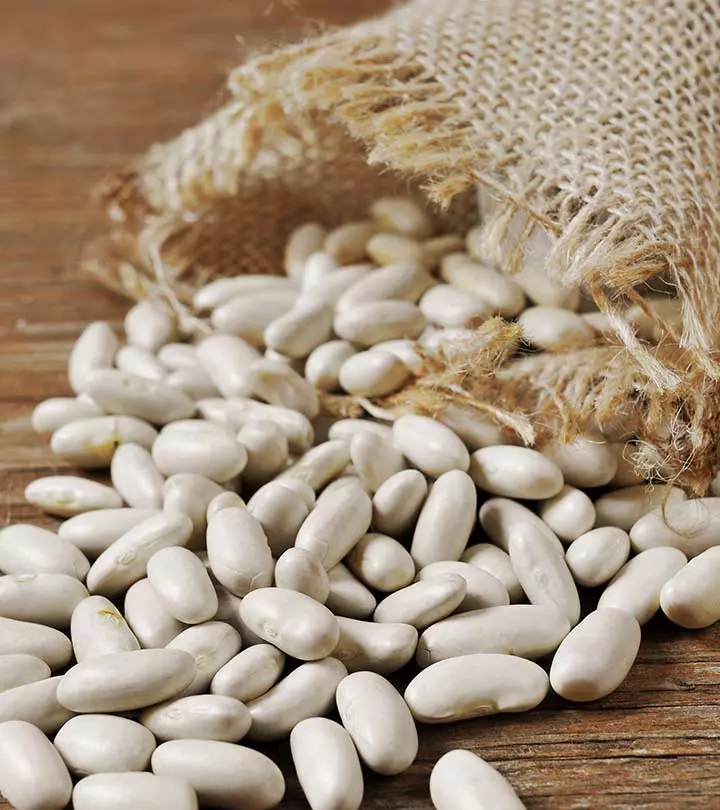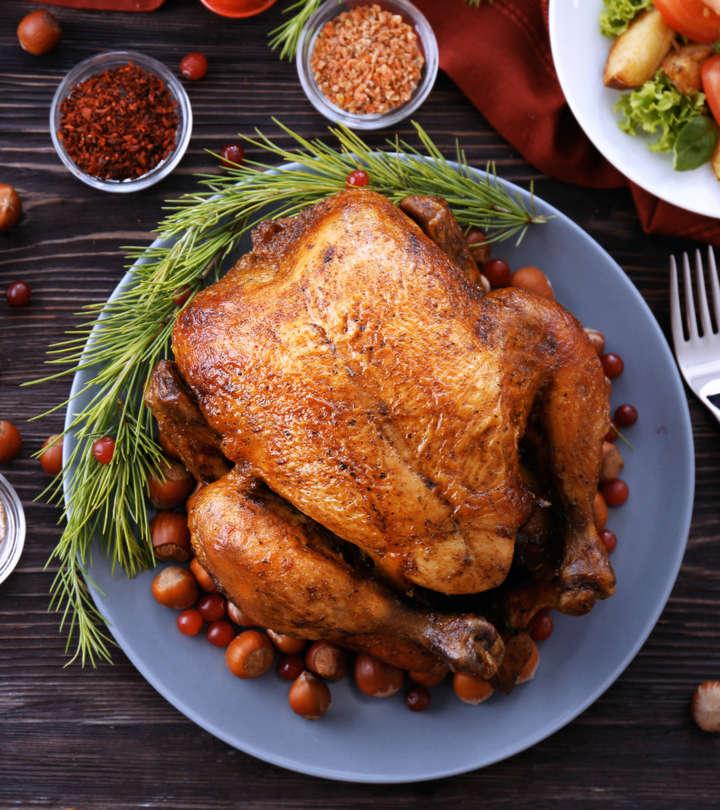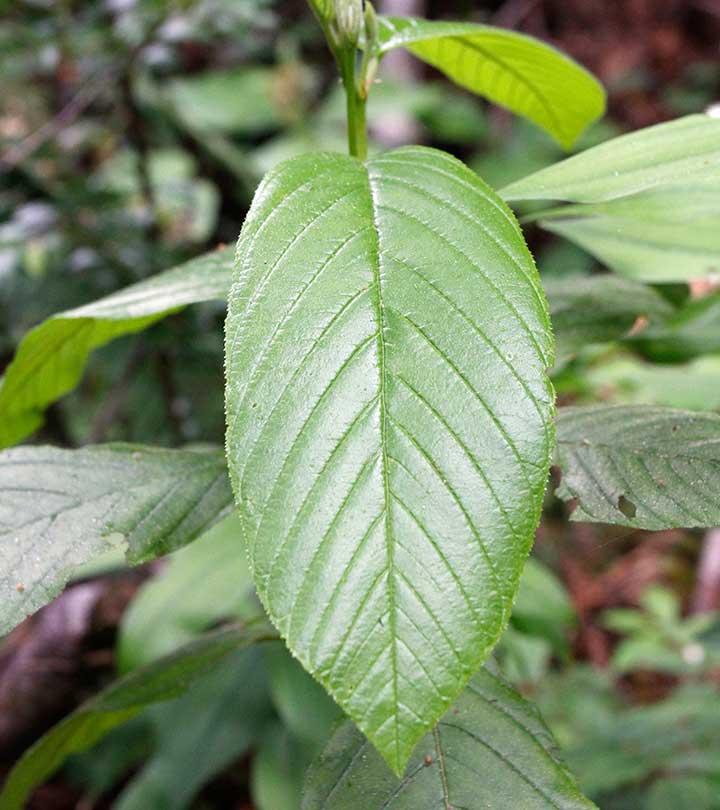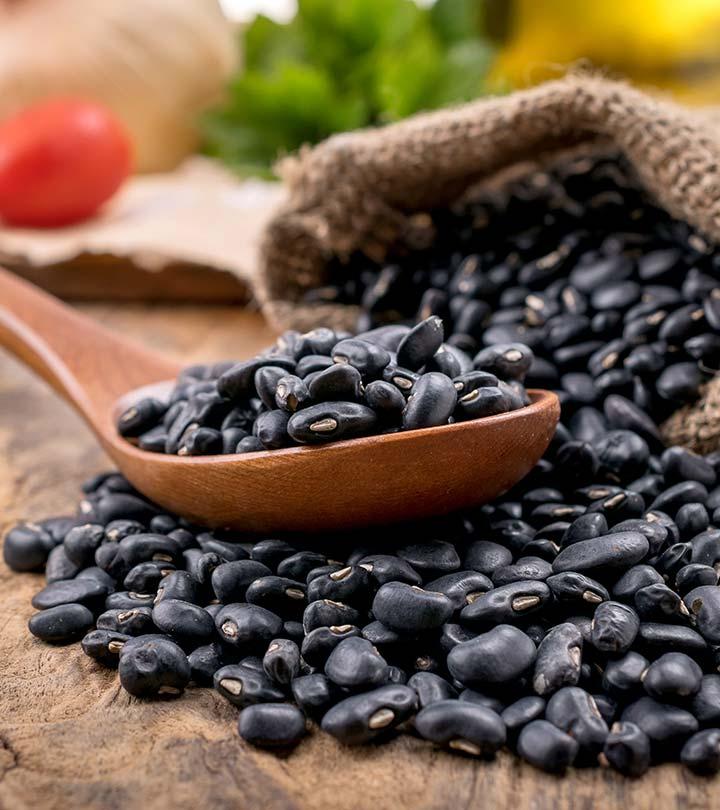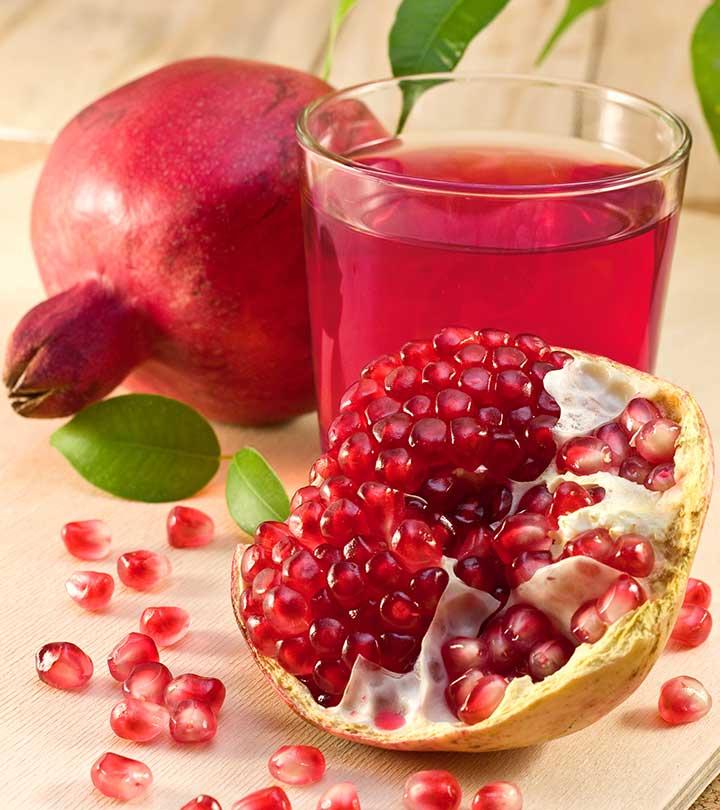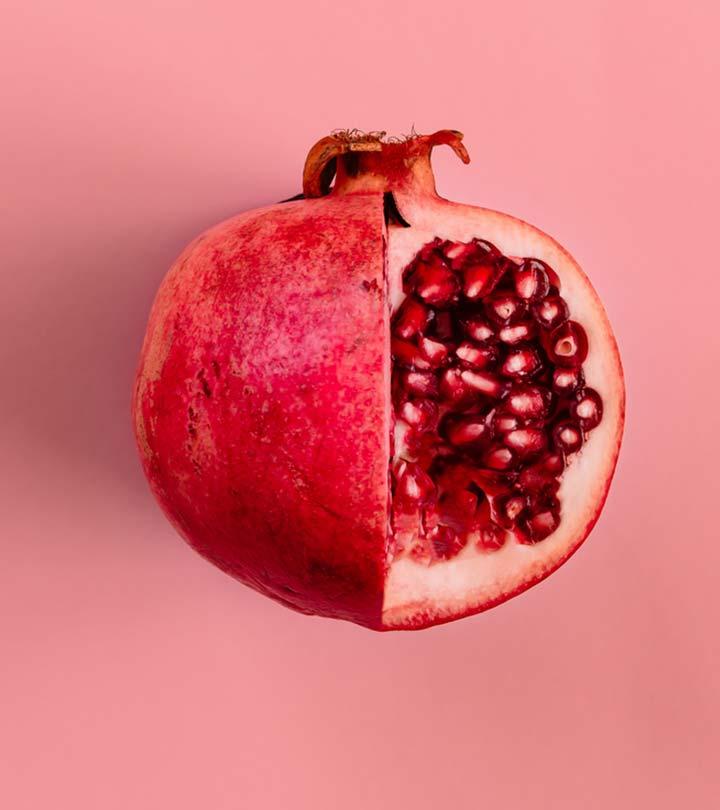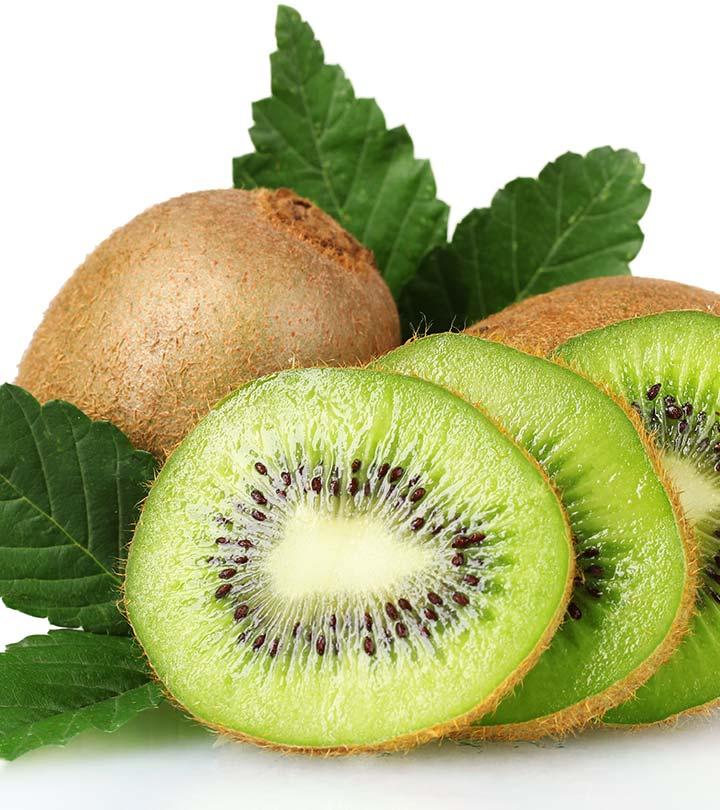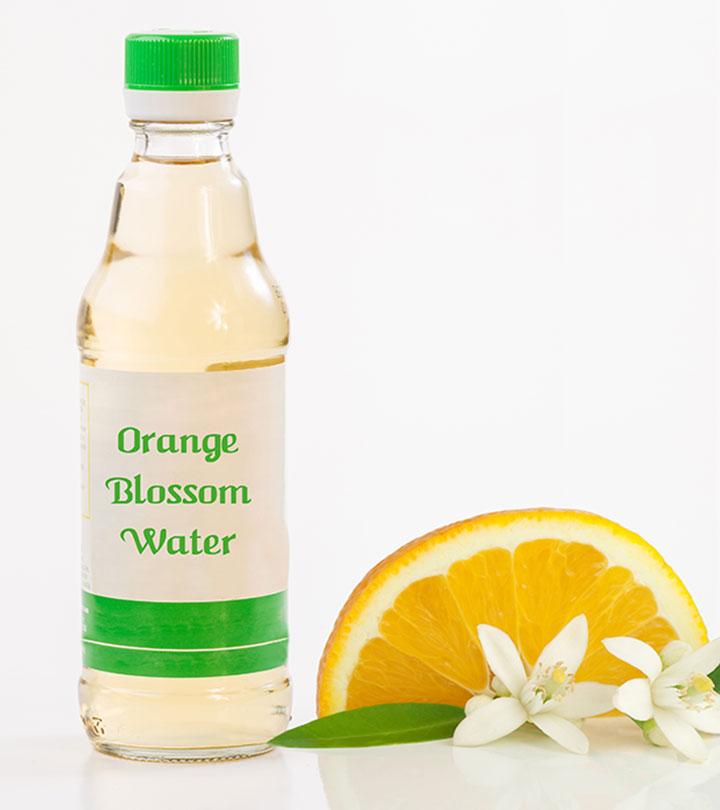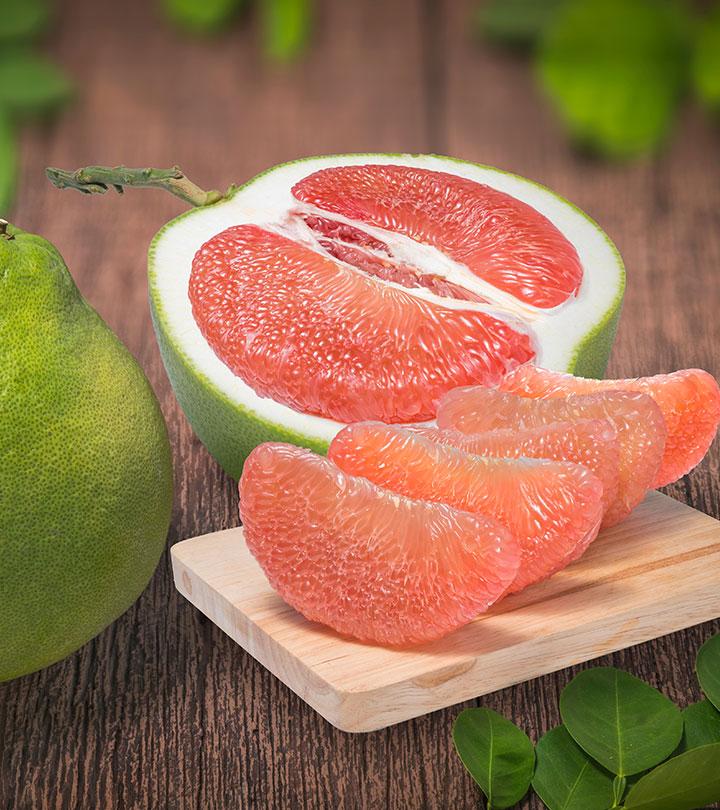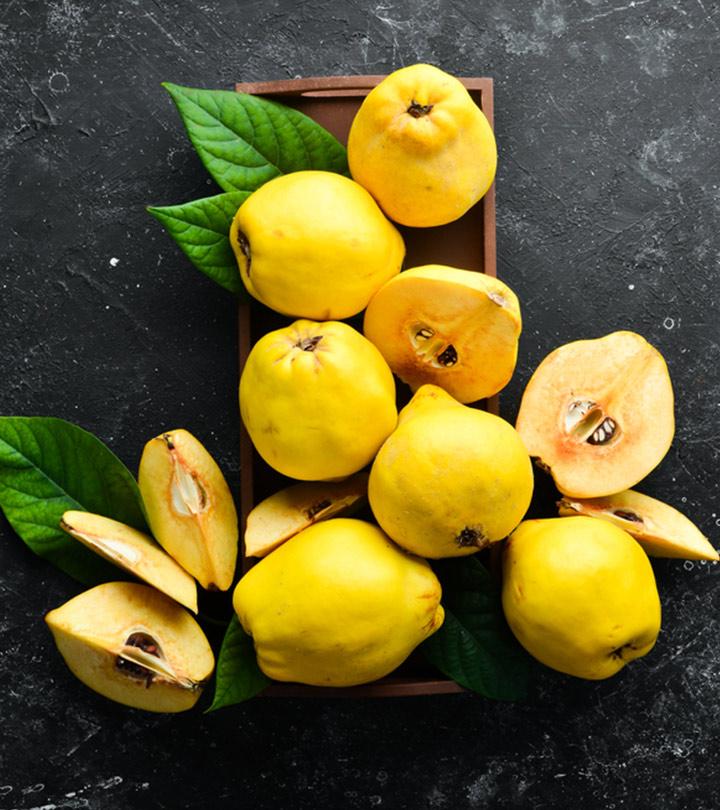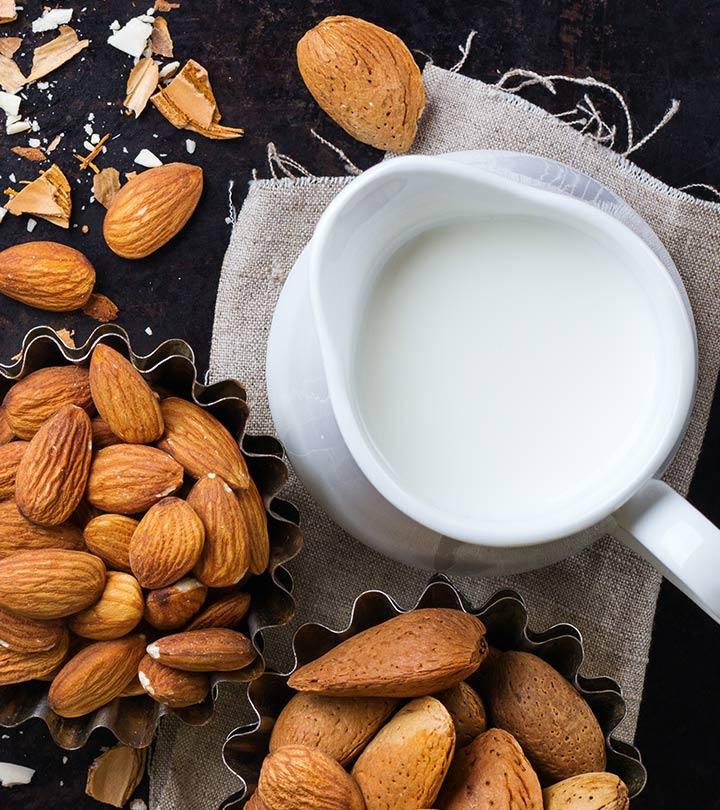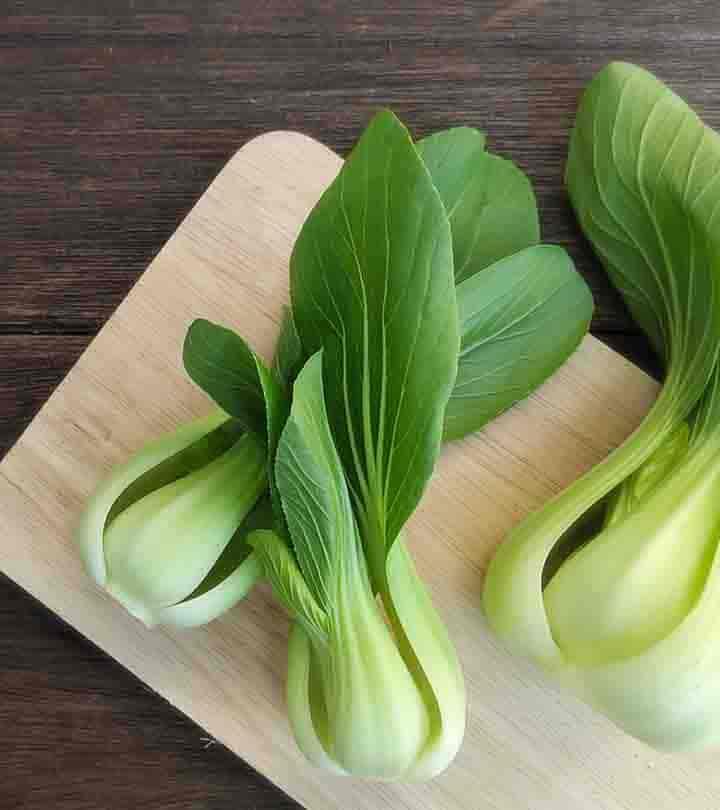8 Bay Leaf Benefits For Health, Nutrition, & Side Effects
Eat bay leaves in recommended amounts otherwise they may cause side effects.
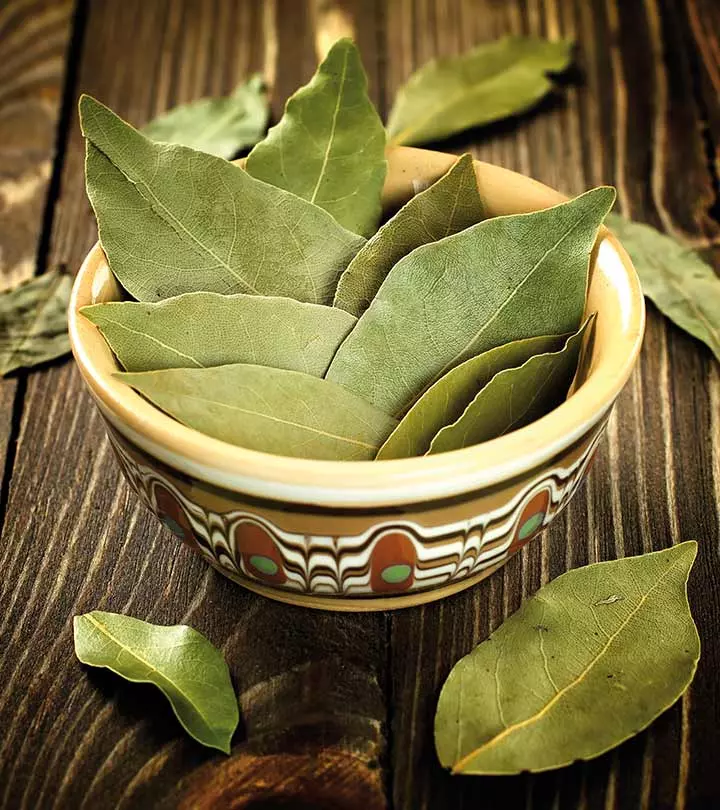
Image: Shutterstock
Bay leaf benefits go beyond its aromatic flavor. The fragrant bay leaves originated in the Mediterranean and are packed with nutrients. Generally, they are used as ingredients for cooking purposes or taken out of cooked food before eating. Its essential oils are also used in cooking.
Several studies showed that the leaves possess antioxidant, anti-cancer, antibacterial, and anti-inflammatory properties. Researchers have also found that the leaves could manage diabetes, fight infections, improve the immune system and digestion, reduce inflammation, enhance heart health, and reduce cancer risk.
This article discusses the benefits of bay leaves, their nutritional profile, how to use them for maximum benefits, and any potential side effects. Take a look.
 Know Your Ingredient: Bay Leaf
Know Your Ingredient: Bay LeafWhat Is It?
A fragrant herb from the bay laurel tree or Indian bay plant that is used in cooking.
What Are Its Benefits?
It helps fight dandruff, slows down skin aging, and aids in wound healing.
Who Can Consume It?
Anyone can consume it except people on blood sugar medication.
How Often?
You can drink 1 to 2 cups of bay leaf tea daily.
Caution
Avoid consuming bay leaves if you are pregnant, breastfeeding, or scheduled for surgery in two weeks. Excess consumption may cause sleeplessness and slow breathing.
In This Article
What Is Bay Leaf?
Bay leaf is the aromatic leaf that comes from several plants, including the bay laurel, Indian bay leaf plant, Indonesian laurel, and the West Indian bay tree.
The leaf has a sharp and bitter taste. It is primarily used for its fragrance than its taste.
 Trivia
TriviaHowever, in addition to the fragrance, the leaf also has some important benefits.
What Are The Benefits Of Bay Leaf?
1. May Aid Diabetes Treatment
Studies show that bay leaves can help people with type 2 diabetes. In addition to rendering flavor to foods, bay leaves were also found to play a role in glucose metabolism (1).
Bay leaves also reduced bad cholesterol levels and increased levels of HDL (the good cholesterol) in patients with type 2 diabetes (2).
Bay leaves may reduce food cravings, thereby reducing body weight. However, more research is required to understand the mechanism of bay leaves on weight loss.
2. May Fight Inflammation
In an Australian study, bay leaf, among a few other leaves, was found to inhibit the activity of the COX-21 enzyme. COX-21 is known to trigger inflammation (3).
Bay leaf contains sesquiterpene lactones, which are known to fight inflammation by inhibiting the production of nitric oxide (4). Studies show that nitric oxide, in higher concentrations, can lead to inflammation. Nitric oxide inhibitors serve as potential treatment options for inflammatory diseases (5).
Cineole, a major compound in bay leaf, was also found to fight inflammation. It achieves this by inhibiting the activation of inflammasome, another compound responsible for the activation of inflammatory responses (6).
3. May Help Reduce Cancer Risk
A study conducted on human cancer cell lines concluded that bay leaf extract showed promising results as an anticancer agent (7). Cineole, the main compound in bay leaves, was found to suppress the growth of leukemia cancer cell lines (8).
Bay leaf was also found to be effective in breast cancer therapy. A study found that the leaf extract induced cell death in breast cancer cell lines (9).
In an Australian study, incorporating ingredients (including bay leaf) into foods showed positive results in the prevention of colon cancer (10).
4. May Help Fight Fungal Infections
Studies highlight the antifungal properties of bay leaf, especially against Candida infection. The leaf can prevent the adhesion of Candida to the cell walls, thereby keeping it from penetrating the membrane (11). More studies are needed to better understand how bay leaf can work to fight fungal infections.
5. May Aid Wound Healing
In rat studies, bay leaf was found to contribute to better wound healing than the control. Though it didn’t fare better than Allamanda (a perennial shrub used in traditional medicine) in terms of healing wounds, it did show beneficial effects (12).
6. May Treat Respiratory Issues
Bay leaf extract may be used to treat respiratory problems. A study showed antibacterial activity of the leaf extracts against some organisms, like Staphylococcus aureus. This leaf extract is strong against the methicillin-resistant Staphylococcus aureus (13).
7. May Improve Skin Health
As per one study, bay leaves can act against skin rashes (14). These leaves can also help prevent wrinkles and relieve skin from stress. However, more research is required to understand the benefits bay leaves can have on human skin.
8. May Aid Dandruff Treatment
Anecdotal evidence suggests that bay leaf may treat dandruff and reduce hair loss. Bay leaf oil and a rinse made from these leaves were found to be effective in treating hair loss and dandruff.
A blogger shares her experience of using bay leaves in a variety of ways in one of her blog posts. She writes, “For years I have been adding fresh bay leaf to my soups, stews, tomato sauces, etc. for additional flavor….but recently I have been exploring the medicinal properties of it because one of my interns showed me a site that says it’s one of the herbs that can stimulate hair growth. After covid I and others have experienced hair loss and thinning for which no Rogaine or other commercial product was attractive to me (i).” She adds, “The more I researched, the more impressed I became with this many uses.”
These leaves are also used to treat head lice effectively. However, more scientific research is required to understand the use of bay leaf in this regard.
 Trivia
TriviaIn the following section, we will look at the rich and varied nutritional profile of bay leaf.
What Is The Nutritional Profile Of Bay Leaf?
According to the United States Department of Agriculture, one tablespoon of crumbled bay leaf (1.8 g) contains:
- 63 calories of energy
- 35 g of carbohydrate
- 137 g of protein
- 4733 g of dietary fiber, vitamins, and minerals (15).
You can get all these beneficial nutrients from bay leaf by including it in your diet. One of the easiest ways is to have it in the form of tea. To know more about it, check out the next section.
How To Make Bay Leaf Tea
Ingredients
- 2-3 dried or fresh bay leaves
- 2 cups of water
- 1 cinnamon stick (optional)
- 2-3 whole cloves (optional)
- Honey or lemon slices (optional)
How To Prepare
- Rinse bay leaves under cold water to remove dirt.
- Gently crush bay leaves to release their flavor.
- In a saucepan, boil 2 cups of water.
- Add bay leaves, cinnamon, and cloves (optional).
- Simmer for 5-7 minutes, then strain into a cup.
- Add honey or lemon for enhanced flavor.
Before you start to include bay leaves in your diet, it is important to be aware of their side effects as well.
What Are The Side Effects Of Bay Leaf?
Bay leaf benefits the body when consumed in recommended amounts in the short term. Excess consumption of these leaves may cause some adverse effects in some people. These may include issues during pregnancy, lactation, and surgery, and interactions with blood sugar control medications. Also, bay leaf may cause allergies in some people.
- Possible Issues During Pregnancy And Breastfeeding
There is limited information available on the safety of bay leaf intake during pregnancy or breastfeeding. Please consult your doctor before including it in your diet.
- May Interact With Blood Sugar Control
Bay leaf can play a beneficial role in glucose metabolism (1). This beneficial property may also make it interact with blood sugar medications. Hence, if you are on medications for high blood sugar, consult your doctor before taking bay leaf. Since there is lack of concrete research in this area, it is better to take precautions.
- Possible Issues During Surgery
Anecdotal evidence suggests that bay leaf may cause issues during surgery. It may slow down the central nervous system. Hence, stop using bay leaf at least two weeks before a scheduled surgery.
Infographic: Bay Leaves Nutrition And Uses
Bay leaves are used in various cuisines worldwide for the unique aroma they add to food. If included as a part of the diet, these can offer an array of health benefits.
The following infographic provides information about the nutrients and uses of bay leaves. Check it out! Illustration: StyleCraze Design Team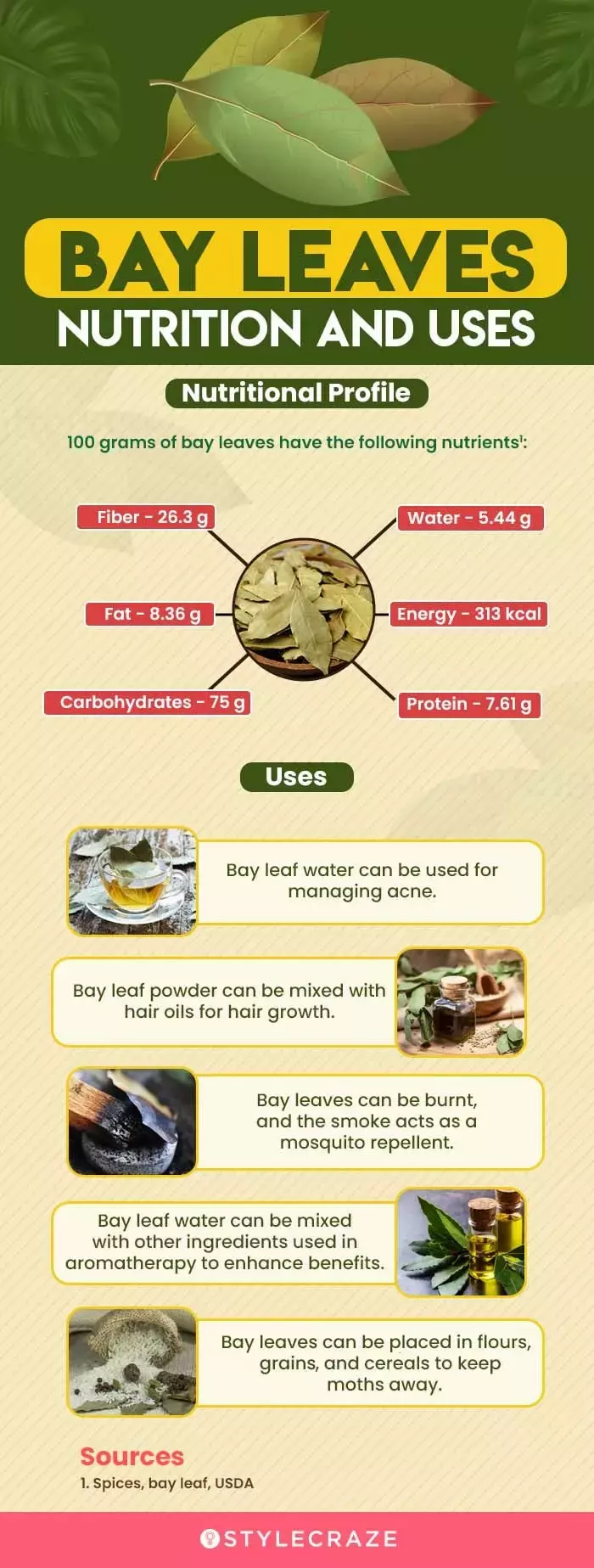
Bay leaf is a commonly used spice in many popular cuisines around the world. However, bay leaf benefits go beyond its subtle aromatic flavor. Bay leaf is known to contain antimicrobial and anti-inflammatory properties that help fight infections and inflammatory responses in the body. It also seems to have beneficial wound-healing properties and helps improve respiratory ailments. These leaves are also used as a home remedy to treat head lice and dandruff. These also help reduce signs of stress and aging from your skin. While bay leaf is deemed generally safe to consume, it should be taken in moderation to avoid any possible side effects.
Frequently Asked Questions
Is swallowing a bay leaf dangerous?
Swallowing a bay leaf is not dangerous as it doesn’t contain toxins. But the leaves are stiff even after cooking. They have sharp edges. Swallowing them may scrape the digestive tract and cause choking.
Are bay leaves toxic to pets?
The only known way the leaves may cause harm to pets is choking. Keep your pets away from the leaves.
What does burning a bay leaf do?
Burning a bay leaf is believed to relieve anxiety. The resulting smoke contains important ingredients, like linalool, which help reduce anxiety. However, there is no scientific evidence backing the claim.
What other forms is bay leaf available in?
You can also avail the benefits of bay leaf in the form of tea, oil, capsules, and powder.
What is bay leaf called in different languages?
Bay leaf is called hoja de laurel in Spanish, feuille de laurier in French, and tej patta in Hindi.
Does bay leaf tea lower blood pressure?
Limited research is available in this regard. Some anecdotal evidence suggests that bay leaf tea may lower blood pressure levels.
Is bay leaf a diuretic?
Yes. Bay leaf is a diuretic (16). It promotes sweating and may help flush out toxins from the body.
Does bay leaf keep bugs away?
Bay leaves could repel fleas and kill flea larvae in a study (17). The pungent odor of bay leaves benefits in keeping fleas away.
Does bay leaf help you sleep?
Bay leaves may help in sleep. The leaves possess soothing properties that may aid sleep. They may have sedative effects on the central nervous system. However, research is insufficient.
How can those with diabetes use bay leaves?
Individuals with diabetes may use bay leaves in powdered form. They can also add a whole leaf in soups and curries.
Key Takeaways
- Bay leaves come from the Indian bay leaf and have a sharp and bitter taste.
- Bay leaves should be added to your diet due to their rich protein and dietary fiber content.
- Bay leaves may promote hair growth and reduce dandruff.
- Bay leaves may interact with blood sugar medications due to their key role in glucose metabolism.
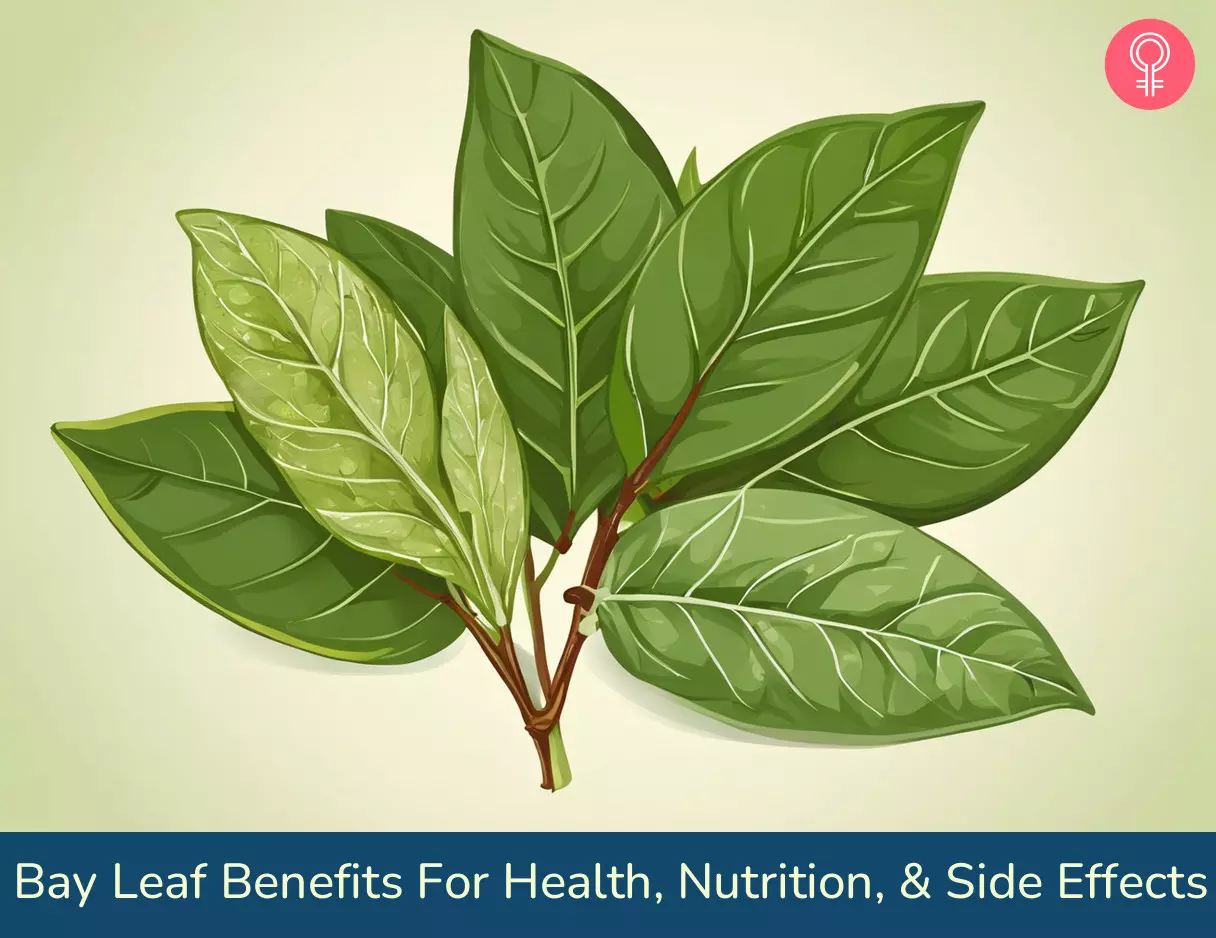
Image: Stable Diffusion/StyleCraze Design Team
References
Articles on StyleCraze are backed by verified information from peer-reviewed and academic research papers, reputed organizations, research institutions, and medical associations to ensure accuracy and relevance. Read our editorial policy to learn more.
- Khan, A, et al. “Insulin Potentiating Factor and Chromium Content of Selected Foods and Spices.” Biological Trace Element Research, U.S. National Library of Medicine, Mar. 1990.
https://www.ncbi.nlm.nih.gov/pubmed/1702671/ - Khan, Alam et al. “Bay leaves improve glucose and lipid profile of people with type 2 diabetes.” Journal of clinical biochemistry and nutrition vol. 44,1 (2009): 52-6.
https://www.ncbi.nlm.nih.gov/pmc/articles/PMC2613499/ - Guo, Yu, et al. “Anti-Inflammatory Potential of Native Australian Herbs Polyphenols.” Toxicology Reports, Elsevier, 15 July 2014.
www.ncbi.nlm.nih.gov/pubmed/28962255 - Orlando, Robert A et al. “Inhibition of nuclear factor kappaB activation and cyclooxygenase-2 expression by aqueous extracts of Hispanic medicinal herbs.” Journal of medicinal food vol. 13,4 (2010): 888-95.
https://www.ncbi.nlm.nih.gov/pmc/articles/PMC3129691/ - Sharma, J N, et al. “Role of Nitric Oxide in Inflammatory Diseases.” Inflammopharmacology, U.S. National Library of Medicine, Dec. 2007,
https://www.ncbi.nlm.nih.gov/pubmed/18236016 - Lee, Eun Hye, et al. “Laurus Nobilis Leaf Extract Controls Inflammation by Suppressing NLRP3 Inflammasome Activation.” Journal of Cellular Physiology, U.S. National Library of Medicine, May 2019.
https://www.ncbi.nlm.nih.gov/pubmed/30387132 - Berrington, Danielle, and Namrita Lall. “Anticancer Activity of Certain Herbs and Spices on the Cervical Epithelial Carcinoma (HeLa) Cell Line.” Evidence-based complementary and alternative medicine : eCAM vol. 2012 (2012): 564927.
https://www.ncbi.nlm.nih.gov/pmc/articles/PMC3357546/ - Moteki, Hiroyuki, et al. “Specific Induction of Apoptosis by 1,8-Cineole in Two Human Leukemia Cell Lines, but Not a in Human Stomach Cancer Cell Line.” Oncology Reports, U.S. National Library of Medicine, 2002.
https://www.ncbi.nlm.nih.gov/pubmed/12066204 - Evaluation of the volatile oil composition and antiproliferative activity of Laurus nobilis L. (Lauraceae) on breast cancer cell line models, ResearchGate.
https://www.researchgate.net/publication/258845244_”Evaluation_of_the_volatile_oil_composition_and_antiproliferative_activity_of_Laurus_nobilis_L_Lauraceae_on_breast_cancer_cell_line_models - Bennett, Louise, et al. “Molecular Size Fractions of Bay Leaf (Laurus Nobilis) Exhibit Differentiated Regulation of Colorectal Cancer Cell Growth in Vitro.” Nutrition and Cancer, U.S. National Library of Medicine, 2013.
https://www.ncbi.nlm.nih.gov/pubmed/23859043 - Peixoto, Larissa Rangel, et al. “Antifungal Activity, Mode of Action and Anti-Biofilm Effects of Laurus Nobilis Linnaeus Essential Oil against Candida Spp.” Archives of Oral Biology, U.S. National Library of Medicine, Jan. 2017.
https://www.ncbi.nlm.nih.gov/pubmed/27771586 - Nayak, Shivananda, et al. “Evaluation of Wound Healing Activity of Allamanda Cathartica. L. and Laurus Nobilis. L. Extracts on Rats.” BMC Complementary and Alternative Medicine, BioMed Central, 5 Apr. 2006.
https://www.ncbi.nlm.nih.gov/pmc/articles/PMC1456996/ - Otsuka, Nao, et al. “Anti-Methicillin Resistant Staphylococcus Aureus (MRSA) Compounds Isolated from Laurus Nobilis.” Biological & Pharmaceutical Bulletin, U.S. National Library of Medicine, Sept. 2008.
https://www.ncbi.nlm.nih.gov/pubmed/18758079 - Kaurinovic, Biljana, et al. “In Vitro and in Vivo Effects of Laurus Nobilis L. Leaf Extracts.” Molecules (Basel, Switzerland), MDPI, 7 May 2010.
https://www.ncbi.nlm.nih.gov/pmc/articles/PMC6263372/ - “FoodData Central Search Results.” FoodData Central.
https://fdc.nal.usda.gov/fdc-app.html#/food-details/170917/nutrients - Health Benefits of Bay Leaf, Health Action, ResearchGate,
https://www.researchgate.net/publication/326913522_Health_Benefits_of_Bay_Leaf_Health_Action_31_7_24_-_26 - Hart, Benjamin L, and Lynette A Hart. “How mammals stay healthy in nature: the evolution of behaviours to avoid parasites and pathogens.” Philosophical transactions of the Royal Society of London. Series B, Biological sciences vol. 373,1751 (2018): 20170205.
https://www.ncbi.nlm.nih.gov/pmc/articles/PMC6000140/
Read full bio of Alexandra Dusenberry
Read full bio of Ravi Teja Tadimalla
Read full bio of Payal Karnik





